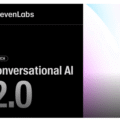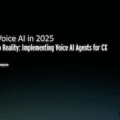AI in CX is growing up—now acting, orchestrating, and integrating across systems to deliver real outcomes.
Articles
Getting It Right: What AI Agents Actually Mean for Customer Support (Webinar)
Join Opus Research, Observe.AI and SimpleOnline Healthcare to learn how to implement AI Agents successfully in order to ensure long-term business value.
Beyond the Basics: How AI Is Transforming B2B Sales at TP
Discover how TP is putting AI to work, spotlighting innovative ways sales experts are driving smarter, faster outcomes for partners and clients.
Five9 Launches Agentic CX: Toward AI Agents That Reason and Act
The new agentic CX capabilities introduce platform architectures and AI agent features that enterprises can use to drive business value.
2025 Conversational AI Intelliview: Decision-Makers Guide to Self-Service & Enterprise Intelligent Assistants
Opus Research’s 2025 Conversational AI Intelliview report evaluates 16 leading solution providers leveraging advanced LLMs and Generative AI to enable self-service and customer care.
Why Is ElevenLabs Building a Conversational AI Stack?
ElevenLabs has introduced Conversational AI 2.0, continuing to lay the groundwork to become a full-stack voice AI platform.
Talk to the Web: How NLWeb Opens Conversational Access to Site Content
Microsoft’s new open-source project, NLWeb, aims to enable any website to respond to natural language queries directly and intelligently.
Battling ‘Botenfreude’: The Power of People and Policy
In the world of automated customer care, I propose we use the term “botenfreude” to capture the pure joy people feel when they encounter or read of the inevitable failure of a chatbot or voicebot.
Voice AI Agents Redefine CX: Trends, ROI, and Strategies for 2025
State of Voice AI Webinar Series | Join Opus Research, Cognigy, and Deepgram (May 29th) to learn about trends in voice AI adoption and ways companies are tailoring voice AI to specific industry needs.
Why Mylow Signals the Next Phase of AI-Powered Self-Service
Lowe’s new Mylow GenAI-powered assistant, developed in partnership with OpenAI, points at the direction retail self-service is heading.










